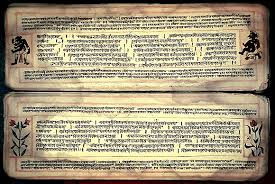prasad1
Active member
I do not know as to the best fit for this topic. So it is GD section.

‘’ If our religion has survived many vicissitudes in the past, it is because of our temples and the festivals associated with them. The spiritual, moral, and ethical principles expounded by the Vedas have survived and spread through the Puranas. They teach the basic truths in a manner, which appeal to the heart. Let us not, therefore, be indifferent to these great works of religious literature, but treasure them, study them, conduct researches in them, and thereby benefit ourselves and the world’’—Kanchi Shankaracharya on February 4, 1958. From ‘Acharya’s Call’, Madras Discourses 1957-1960.
Puranas (Hindu mythological stories) are dated to Gupta period by the scholars on the basis of the genealogical tables in them. Ancient scholars who wanted to update the Puranas included the latest kings which misled the scholars. Actually Puranas are older than Gupta period i.e. 4th century AD. Vishnu Purana is the oldest of the eighteen Puranas.
Manikkavasagar, one of the four famous Saivite saints, praised Lord Shiva as a God ‘’older than the oldest and newer than the newest’’.
Puranas are copious. It contains 400,000 slokas/couplets. They contain lot of interesting stories. All the ancient seers of India are listed there. Names like Agastya, Vishwamitra and Vashista also misled many a scholar because several seers had the same name. Since they are Gotra (clan or group) names, all the Rishis or seers born in the family were called with the same name. Those who do research into Puranas must take all the above factors into account. Pargiter tried a make a historical list of kings out of the Puranas ( Pargiter’s ‘Dynasties of the Kali Age’, 1913). Though his attempt was appreciated by later day scholars, his list was not without errors. But one may take it as a starting point and improve upon it.
Oldest Purana: Vishnu Purana: (in the present form -300 AD)

 www.speakingtree.in
www.speakingtree.in

‘’ If our religion has survived many vicissitudes in the past, it is because of our temples and the festivals associated with them. The spiritual, moral, and ethical principles expounded by the Vedas have survived and spread through the Puranas. They teach the basic truths in a manner, which appeal to the heart. Let us not, therefore, be indifferent to these great works of religious literature, but treasure them, study them, conduct researches in them, and thereby benefit ourselves and the world’’—Kanchi Shankaracharya on February 4, 1958. From ‘Acharya’s Call’, Madras Discourses 1957-1960.
Puranas (Hindu mythological stories) are dated to Gupta period by the scholars on the basis of the genealogical tables in them. Ancient scholars who wanted to update the Puranas included the latest kings which misled the scholars. Actually Puranas are older than Gupta period i.e. 4th century AD. Vishnu Purana is the oldest of the eighteen Puranas.
Manikkavasagar, one of the four famous Saivite saints, praised Lord Shiva as a God ‘’older than the oldest and newer than the newest’’.
Puranas are copious. It contains 400,000 slokas/couplets. They contain lot of interesting stories. All the ancient seers of India are listed there. Names like Agastya, Vishwamitra and Vashista also misled many a scholar because several seers had the same name. Since they are Gotra (clan or group) names, all the Rishis or seers born in the family were called with the same name. Those who do research into Puranas must take all the above factors into account. Pargiter tried a make a historical list of kings out of the Puranas ( Pargiter’s ‘Dynasties of the Kali Age’, 1913). Though his attempt was appreciated by later day scholars, his list was not without errors. But one may take it as a starting point and improve upon it.
Oldest Purana: Vishnu Purana: (in the present form -300 AD)



